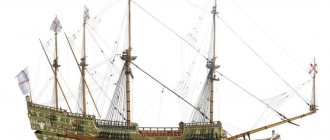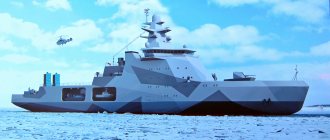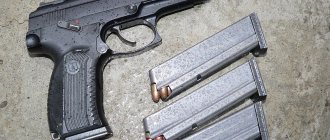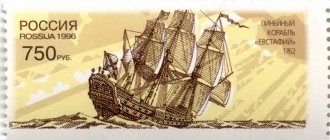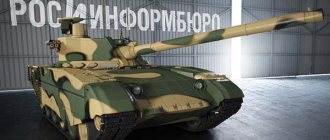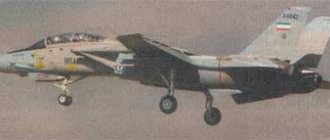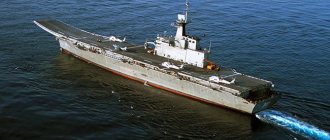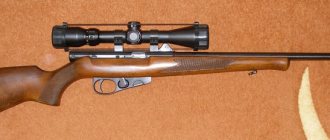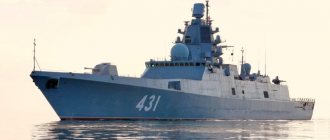Navy Day in Russia is celebrated on the last Sunday of July. In 2015, this holiday falls on July 26.
The origins of the Navy in Russia began at the end of the 17th century under Peter I. In honor of the first victory of the Russian fleet on July 27 (August 7, new style) 1714 at Gangut, Peter I ordered that this day be celebrated annually with solemn services, naval parades and fireworks.
From 1980 to the present, Navy Day in Russia has been celebrated on the last Sunday of July.
Warships that are part of the Russian Navy serve different purposes and are accordingly divided into different classes. AiF.ru tells in infographics about modern types of warships.
Depending on the purpose (task performed), ships can be divided into the following classes (types):
- aircraft carriers;
- cruisers;
- universal landing ships;
- destroyers;
- frigates;
- corvettes;
- landing ships.
"Peter the Great"
Nuclear heavy cruiser. The world's largest operational warship, not an aircraft carrier. Length 250 m, width 25 m, height 59 m, displacement more than 23 tons. Power plant - 2 nuclear reactors, there are 2 auxiliary boilers, 2 turbines and 4 power plants, 4 steam turbine generators and gas turbine generators, 2 propeller shafts. Capable of reaching a speed of 32 knots. It can voyage autonomously for up to 60 days; this period is limited by the volume of food reserves; it may not be replenished with fuel for 3 years.
The ship can hit large targets located above water, protect naval formations from air attack and from submarine attacks. It has an unlimited cruising range and is equipped with cruise missiles with a flight range of more than 600 km.
Warships before the twentieth century
In ancient times, the bulk of ships adapted for coastal navigation were divided by the number of rows of oars. The presence of a large number of oarsmen, who required large amounts of food, did not contribute to the development of long-distance navigation.
With the advent of the sail, the development of the fleet and the consolidation of ships began. Along with the development of navigational instruments and technologies, the fleet developed, which by the 15th century made it possible to make the first major voyages across the oceans.
The wealth of the New World spurred European shipbuilders, and already in the 16th century the design of warships began to develop and become more complex. A little later, the fleet will begin to be divided into classes and ranks. At that time, the main criterion was either the number of guns or the sailing armament of the ship.
The ships, depending on the number of guns, fell into the 1st rank (about 100 guns or more), 2nd rank (about 90 guns), 3rd rank (about 75) and so on, up to 6th rank.
The second classification divided ships depending on the presence or absence of certain sails. There were three-masted and two-masted sailing ships, as well as single-masted varieties of very small ships, usually used to transport mail.
The ships could have any names associated with personal names, religious or geographical components. There were cases when, for special merits, the name of a ship was left in the fleet, although the ship itself might not exist. In the Russian fleet, the most striking example was the brig Mercury and several ships Memory of Mercury.
With the advent of mechanisms and the transition from sail to machine, many names for types of ships took root and remain to this day. The main difference between any ship was its size, displacement or tonnage. The history of steamships, although not as many centuries old as the sail, has clearly written pages in the naval chronicle.
The development of technology has reduced entire groups of once formidable ships to nothing, and transferred classes to other ranks. So, for example, the 20th century showed the weakness of battleships in front of aircraft-carrying groups. The Second World War generally made major changes to the picture of warships in the world. And if 300 years ago a frigate was a large ship, now it has descended to the level of patrol ships.
"Persistent"
Destroyer, flagship of the Baltic Fleet. Purpose: destruction of ground targets, air defense facilities, enemy equipment and manpower. Can provide fire support for landing forces, transport and landing ships. Destroy surface ships and means of landing enemy troops.
Can patrol and perform combat service along with other front forces.
Warships of different navies
The ship classification system adopted by the international community has proven to be unsuitable for some navies. Thus, the Japanese system of dividing ships can raise at least a lot of questions from an ignorant person. Japan, having a serious fleet, one of the best in Asia, meanwhile went a long way to modernize the ships under construction.
As a result, the same class of warships can differ significantly in their characteristics depending on the year of manufacture. Thus, the same destroyers in service can meet all modern requirements if they were built recently, or they can correspond to frigates or corvettes of other navies.
Helicopter destroyers are considered the main force of the Japanese fleet.
Despite their name, they are essentially light aircraft carriers equipped with state-of-the-art electronics. This class includes two types of ships, the Hyuga, which is a pair of ships, and the Shirane, also a pair of ships. Interestingly, the last two vessels were introduced into the fleet back in the 1980s.
The second category consists of URO (guided missile weapons) destroyers. There are also different types of ships here. The most modern ones, the Atago type, represented by two ships. The Kongo class consists of four ships built in the 1990s. Hatakaze class, created in the second half of the 1980s, consisting of a pair of ships, now used as training vessels.
Another category, the third, again destroyers, but more similar to their counterparts in other fleets. This includes many types, broken down by time of construction. The fourth category, submarines, is represented by 17 diesel submarines. The fifth includes landing and auxiliary ships, as well as icebreakers.
Its own classification in the US Navy. Vessels are divided according to their purpose. To distinguish them, a letter encryption system has been introduced. So, for example, the letters “BB” mean BigBattleship, which corresponds to the class of battleships in other fleets.
It is interesting that sometimes a ship changes its class, but the letters are left by the decision of the naval command.
This happened several times after major fleet reforms throughout the 20th century. Common to all ships are the letters “USS,” meaning “ship of the United States.”
Among the largest types of ships, usually designated by variations with the letters “CV,” are aircraft carriers. They vary in size and type of aircraft, airplanes or helicopters, but are combined into one class.
The remaining surface ships have an original letter designation, such as “C” - cruisers, “D” - destroyers, “F” - frigate. Over the years, both patrol ships and monitors were found under codes, but over time they were removed from the US Navy.
The submarine fleet wears the obligatory letter “S”, which also has many additional meanings depending on the type of weapon or power plant. The letter “P” stands for boats, which also vary in size and type of weapons they carry.
There are quite a few ciphers here that were used during the Vietnam War and then simply abandoned.
American coast guard warships, which are formally a separate unit, can also be placed here. The letter “L” means that the ship belongs to the landing fleet. It varies between huge landing ships that transport soldiers from one continent to another, and landing craft that land infantry and equipment directly on land. The latter have amphibian traits.
The development of these boats received a lot of attention back during World War II, when Marines landed and fought on the Pacific Islands and in the famous Normandy landing zone. The letter "A" designated all auxiliary vessels.
Despite the former glory of the mistress of the seas, the British fleet has lost all its former power. However, the authority of English sailors still remains high. Classifying ships of the British Navy is quite difficult.
Of course, among them are the same aircraft carriers, destroyers, corvettes and boats, but they differ by pennant number.
Each flotilla had its own special pennant, and the ship in this flotilla was assigned a number and then a letter indicating the class of the ship. It is interesting that in numerology there is no number “13” at all, which is considered unlucky among sailors.
The system of classification by numbers and pennants continues to exist, with minor changes, since the First World War.
The history of the navy goes back hundreds of years. Since sailors are extremely superstitious people, they keep traditions, including those associated with their “home” - the ship, in the names of ships, and even in their classification, you can find many old terms and designations that do not make the fleet less effective.
"Admiral Chabanenko"
A multi-purpose frigate with missile weapons, it belongs to the Russian Northern Fleet. It is armed with automatic cannons, anti-aircraft guns, cruise missiles, 8 torpedoes, and mines. There is a hydroacoustic complex, electronic weapons, target detection systems, navigation, warnings about laser irradiation. The aviation group consists of 2 anti-submarine helicopters.
Large and powerful ships, surface and underwater, form the backbone of the navy. They have modern weapons and systems that allow them to detect enemy weapons, avoid detection themselves, and conduct combat operations.
Division of ships in the Soviet and Russian Navy
According to international maritime law, each ship falls into its own specific class. These rules, in order to avoid confusion, were used by Soviet sailors, as well as their legal successors, the ships of the Russian Navy.
Ships are divided by tonnage, or displacement, as well as by the type of weapons on board, that is, one might say, the old system has entered the new realities of modern ships.
According to these documents, the largest ships included in the strike group are:
- aircraft carriers, depending on their tonnage, can be large, medium and small, and the strength of naval aviation on them varies accordingly;
- cruisers, also varying in displacement, having more versatile tasks, from guarding convoys and aircraft carriers to intercepting enemy ships and shelling the coastline;
- submarines, often larger than surface ships in size and armament, are divided according to their size and the type of propulsion system used;
- destroyers carrying out reconnaissance and protection of a group of ships, carrying the main weapons in the form of mines and torpedoes;
- torpedo boats, large of which are designed to attack large ships as part of squadrons, while small ones operate in the coastal zone;
- patrol ships designed for combat protection of convoys and the waters of a port or other facility.
There is also a smaller division of these classes of ships, but in each country they have their own characteristics and characteristics.
The second large subclass includes auxiliary vessels. They can be divided into several groups:
- floating bases necessary for replenishment with everything necessary, depending on the specialization of the base for each class of ships;
- supply ships, unlike bases, are more mobile and fast, although the goals and objectives for them are the same as above;
- repair facilities, floating workshops necessary for repairing ships on the high seas;
- rescue ships, designed to assist both submarines and surface ships in the event of emergency situations;
- research ships testing new technical systems;
- training ships used to acquire and master skills at sea;
- special ships testing weapon systems and complexes for spacecraft.
The crews of support ships perform many tasks to maintain the combat effectiveness of the main fleet. The USSR Navy also had a system of distinguishing ships by name. Thus, in the Northern Fleet for a long time there was a division of Soviet patrol troops known as the “Bad Weather Division”.
The first in the series was the Hurricane ship, and in honor of it, subsequent ships of the same class, displacement and armament received “inclement” names. For example, the waves of the Barents Sea plied the “Storm”, “Metel”, “Blizzard” and other ships with similar names at different times.
For many years, the ships themselves have been divided into warheads, or warheads, each of which designates a part of the ship and its purpose.
Crystal Serenity
The beautiful cruise ship, launched in 2003, is already considered an old-timer of the sea. But at the time of the start of operation, it simply charmed the world with its comfort and splendor.
The hospitable sea vessel can accommodate 1,080 passengers, for whom comfortable cabins are equipped with the latest technology.
Passengers can keep themselves busy while sailing on sports grounds, visit cinemas, concert halls or casinos. For relaxation and wellness, the ship has spa salons, massage rooms, and two outdoor swimming pools.
In January 2022, Crystal Serenity set off on its first trip around the world.
2
Corvettes
According to NATO classification, the corvette class included:
- Soviet small anti-submarine ships (MPK);
- small missile ships (SMRs).
The main tasks of modern corvettes are anti-submarine defense of a naval formation (convoy) or a coastal facility (naval base, port, etc.).
In Russia, Project 20380 ships are the first warships built in the Russian Federation under the official name of the “corvette” class. Previously, the corvette class was not distinguished separately in the Soviet and Russian Navy.
As of July 1, 2014, the Russian Navy has four ships of the project in service - Steregushchiy, Soobrazitelny, Boykiy and Stoikiy, all in the Baltic Fleet; four more corvettes are under construction.
Corvette "Boikiy". Photo: Commons.wikimedia.org/ CC BY-SA 3.0/Radziun
New time
In subsequent decades, there was a further development of the ideas laid down by the shipbuilders of the Renaissance. The types of ships of the 18th century are impressive in their diversity, functionality and aesthetic perfection.
In the 18th century, line ships reached the maximum possible size for wooden watercraft. They were protected by armor and received cannon weapons of various calibers. Some battleships carried up to 130 guns. The most powerful was the British fleet, which included up to 100 battleships. At the same time, Russia declared itself as a great maritime power, seizing dominance in the Baltic and Black Sea. During the era of Peter the Great, about 60 battleships were built.
The main types of sailing warships were frigates, corvettes and sloops. Frigates, which had the task of capturing water spaces, subsequently became the most common. What distinguished them from battleships was the presence of one gun deck. Corvettes became a separate branch of their development - faster units with smaller cannon armament. Sloops carried out patrol service, reconnaissance and the fight against pirates. They were also assigned transport and expeditionary tasks. They were not used to fight other military water transport.
Schooners were widely used in the merchant marine. Their distinctive feature was the presence of at least two masts with oblique sails. Large cargo transportation was carried out on barges. For especially important people, they began to build yachts - fast, comfortable vessels. They transformed into modern types of ships. The photo above shows one of the elite yachts of those times.
Oasis of the Seas
The floating city ship “Oasis of the Seas” was put into operation on December 5, 2009.
What else could surprise sophisticated passengers, because the ship has an ice skating rink, many swimming pools with attractions, a large casino and even an aquatheater.
Designers of sea cruise ships surprised by placing a park on a sea vessel for the first time, in which 12 thousand rare plants and 56 trees were planted.
Youth clubs and kindergartens operate on this beautiful and cozy ship. And everyone can play bowling or visit shops and cafes on the Royal Promenade street.
7
Clippers
All types of ships are created for fast sailing. The names of ships are not always remembered, but there are exceptions. Someone will say the word “cruiser”, and immediately everyone around will think something - some “Aurora”, others “Varyag”. Regarding clippers, there is only one option - “Cutty Sark”. This ship with a long and narrow hull went down in history for several reasons, but its main and most important quality was speed. Delivering tea from China, quickly bringing mail to distant colonies and carrying out especially delicate orders from the queen was the lot of clipper ships and their crews. And these ships carried out their work until the advent of steamships, and in some cases even later.
Ship design elements
All ships have common structural elements - hull and equipment. There are main and superstructure hulls, equipment is divided into energy, ship devices and systems, premises equipment, etc.
The main body consists of an outer waterproof skin and a kit. The front part of the hull is called the bow, or bow end; it contains the forepeak, which is the first compartment of the ship's hull. The rear part is called the stern or stern end. It contains the last compartment, called the afterpeak (Fig. 25). The bulkhead separating the forepeak from other compartments of the ship is called the collision or forepeak. If the nasal tip is damaged, it prevents water from penetrating into the hull.
Rice. 25 Diagram of a longitudinal section of the vessel. 1 - superstructure of the 1st tier; 2 - superstructure of the 2nd tier; 3 — superstructure of the 3rd tier; 4 — awning deck; 5 – pipe; 6 — cabin; 7 — forepeak; 8 — after peak; 9 — engine room; 10 — cargo hold; 11 — rubber dams; 12 - fuel tanks
To eliminate the possibility of gaseous products released from liquid fuel entering adjacent cargo or living spaces, they are separated by special compartments with ventilation pipes, called cofferdams.
Double-bottom tanks are used to store fuel, lubricating oils, fresh water and liquid ballast.
Superstructures are built above the main deck and extend from side to side. They contain residential and other premises, which can be public, sanitary and hygienic, service, utility, cargo, etc. The bow superstructure is called a tank, the aft one is a poop. The middle superstructure has no special purpose. Superstructures whose width is less than the width of the vessel are called deckhouses.
It will be interesting: Constructions and design of floating dock hulls
The ship's hull consists of outer plating, decks and platforms, supported by a set. The outer impermeable plating, together with the frame, forms the sides, bottom and ends of the vessel. A horizontal solid floor resting on the sides and bulkheads is called a deck. If it is not located along the entire length of the vessel, it is called a platform.
The internal space of the hull is divided in height by decks and platforms into inter-deck spaces, which are called tweendecks. The upper deck is considered to be the continuous deck of the hull; the deck located below is considered the second, even lower - the third, fourth, etc. The deck above the wheelhouse is called the upper bridge (Fig. 26). Double-deck ships have an upper and lower deck, while three-deck ships have an upper, middle and lower deck.
Rice. 26 Layout of decks and premises on the ship
To ventilate double-bottom compartments, manholes are made in the second bottom flooring, located at opposite ends of such compartments. The length of the hull is divided by strong waterproof transverse bulkheads, forming waterproof compartments on the ship. The rooms located above the second bottom are called holds. Containers located outside the second bottom, used to place liquid cargo in them, are called deep tanks. Any containers used to store liquid cargo in them are called tanks.
Any light waterproof bulkheads separating rooms are called partitions. Shafts are compartments that pass through several decks and do not have horizontal ceilings. The bridge on which the light deckhouses are located is called a transverse platform located across the vessel from one side to the other.
The continuous fencing of the open deck is called a bulwark. Holes are made along the length of the bulwark for rapid drainage of water.
The spar is the name given to masts, topmasts and other tubular structures located on the open deck, designed to carry signals, etc. The upper part of the mast, called the top, ends with a ball or a special attachment - a klotik.
Essential items are unified or standard products necessary for the operation of a vessel. These include ship doors, necks or hatch covers, portholes, skylights, ship ladders, hinges, latches, hooks and other products.
Medieval Cogg
Throwing machines were installed on the decks of the coggs, and later - the first primitive artillery.
In the northern countries of Europe, single-masted coggs were built in the Middle Ages. The word "kogg" is related to the German "kugel", which means "ball". It was named so because of the rounded shape of the body. The sides of the coggs were jagged - like the walls of medieval fortresses.
The coggs had boarding teams.
Armadillo classes (obsolete)[edit | edit code]
- 1st class battleships
- 2nd class battleships
- Coastal defense battleships 1st class
- Coastal defense battleships 2nd class
- Coastal defense battleships 3rd class
- Armored rams
- Armored boats Turret armored boats
- Armored batteries
- Parapet-turret battleships
The first sailboats
The most ancient images of sailing ships date back to the third millennium BC. The place of their appearance is the Nile Valley and the coast of the Persian Gulf. The ancient Egyptians built boats from papyrus and equipped them with sails. On them they could not only move along the Nile, but also go to sea. Their expeditions along the northeastern coast of Africa are known.
The Phoenicians deservedly won the palm among ancient navigators. They created new types of ships. Such means had oars and a rectangular sail. They built not only merchant boats, but also warships. They are credited with the development of galleys and the invention of the ram. There is an opinion that the Phoenicians were the first to circumnavigate all of Africa.
The Greeks adopted the art of shipbuilding from the Phoenicians. They were able to explore the Mediterranean and Black Seas, pass Gibraltar and reach the British Isles. They created biremes and triremes - galleys with two- and three-tier rows of oars. These were the first types of warships.
The main propulsion of ships remained oars, but with the development and improvement of sailing equipment, the role of the wind also increased. Sea trade routes to India and the Far East were established, and the time required for sea crossings was reduced.
Disney Dream
The design of the cruise ship combines amazing 1930s Art Deco style with fun images of Disney cartoon characters. And the general appearance of the vessel from a distance resembles a cartoon duckling.
The originality of the ship, launched in 2010, lies in the design and arrangement of the cabins. Each cabin is equipped with a virtual porthole, and more than 1,500 cabins have their own verandas with views of the sea.
There is something for everyone on the Disney Dream. Passengers have access to fitness centers, cinemas, sports grounds, swimming pools and many attractions for children. Most-Beauty wishes every reader to go on a big cruise on such a liner at least once in their life.
5
Northern sailors
Somewhat later, the Vikings conquered the seas. They created the best types of sailing ships of their time. The greatest fame was gained by the drakkars - combat sea craft, distinguished by high speed, reliability and lightness. They were adapted for entering rivers and mooring to gentle banks. If necessary, northern warriors carried them in their arms. Shields were fixed along the sides, and the oars were passed into special hatches, which protected the rowers during the battle. For trade and transportation of settlers, the Vikings built knorrs - wider and slower ships compared to longships. Knorrs had a deeper draft and could accommodate up to 40 people. The sailing rig allowed sailing at an angle of 60 degrees to the wind. The masts were removable.
The Vikings could stay away from the coast for a long time, guided by the sun and night luminaries. They used observations of the habits of sea animals and birds, taking into account sea currents, ebbs and flows. On their boats they reached Iceland, Greenland and North America. They paved the way from the Varangians to the Greeks and felt confident in the Mediterranean.
Space maps loaded into tablets...
Even in ancient times, our ancestors dreamed of flying. The tale of the flying ship determined the name of the aircraft that was destined to conquer the sky. The concepts “spaceship” and “skyship” were used by Konstantin Tsiolkovsky to refer to devices capable of making a manned flight into outer space. If we talk about the types of spacecraft, then first we need to refer to the concept of “spacecraft”. It is understood as a device that is designed to perform various tasks in space, as well as on the surface of celestial bodies. This category includes artificial Earth satellites, interplanetary stations, and planetary rovers. A spacecraft that is designed to transport cargo or people into space is called a spacecraft. Its main difference is the sealed compartments or compartments that support life support.
Types of spacecraft are classified according to the type of cargo delivered, control method, possibility of return and reusability. They are cargo, automatic and manned. Manned ships contain descent vehicles. There are also reusable cargo and manned ships. Among the most famous are Vostok, Soyuz, Apollo, Shenzhou, and Space Shuttle.
The missile cruiser “Moskva” (Slava) is the flagship of the Russian Black Sea Fleet
RKR "Slava" head. No. 2008, from 05/16/1995 - missile cruiser “Moskva”. Shipyard named after 61 communards (Nikolaev). RKR "Moscow" is part of the Black Sea Fleet. From 10.01 to 17.02.1985. In April 1985, due to a fire in the ship's sauna, the anti-ship missiles were flooded in four launchers as a result of the activation of the sensors of the Karat-M fire-fighting system (the sensors of which are located on the outside of the sauna bulkhead). The ship was on combat duty in the Mediterranean Sea due to the escalation of the situation around Libya. He monitored the US Navy's outpost led by AB America and Forrestal. From May 27, 1986 to February 20, 1987, “Moskva” served in the Mediterranean Sea and the North Atlantic.
Read more…
German battleship Bismarck - a ship of World War II
After Hitler came to power, Germany secretly began building large ships. At the end of the thirties, the so-called “Z” plan was developed, according to which the Germans planned to build eight battleships, five heavy cruisers, four aircraft carriers and 12 smaller cruisers. The “highlights” of the program were to be the battleships Bismarck and Tirpitz. The Anglo-German agreement on naval armaments of 1935 allowed Germany to build two 35,000-ton battleships, but the Bismarck and Tirpitz exceeded the established limit in terms of their displacement.
Read more…
In the filibuster's far blue sea...
The history of the sailing fleet is inextricably linked with piracy. Of course, no one built any pirate ships on purpose. Gentlemen of fortune adapted different types of ships for the needs of sea robbery - whatever was at their disposal. A mutinous crew could seize the ship. Occasionally this happened with the participation of the captain himself. But most often, pirates made seizures at sea. After this, the ships, as a rule, were redesigned. The restructuring consisted primarily of adapting the deck for the installation of powerful artillery and expanding the space for accommodating the boarding crew. To do this, all stern and bow superstructures were removed from the vehicle, and elements of decoration were cut off. Additional guns were installed as the ship moved forward and backward. The rigging was changed in order to give the vessel greater speed. Apparently, the pirates did not lack the necessary materials - they also obtained them by robbery.
The most common types of pirate ships were brigantines, schooners and sloops. Large craft were rare in the pirate fleet. The corsairs did not disdain small feluccas, longboats and pinnaces.
In addition to combat ships, pirates used transport ships. As a rule, these were captured Dutch flutes, as well as their British counterparts, flyboats.
